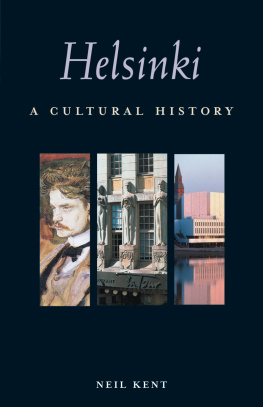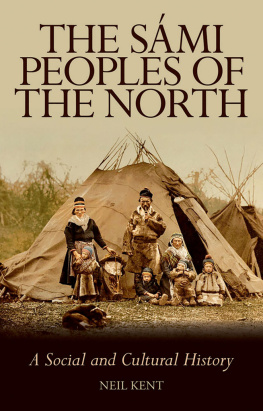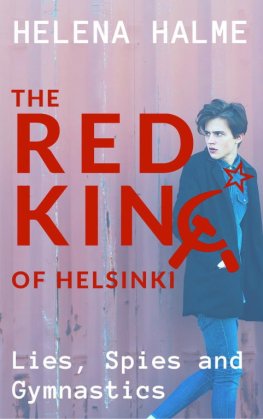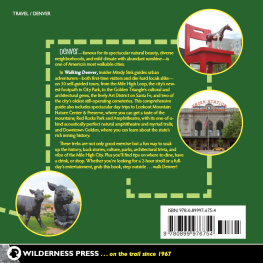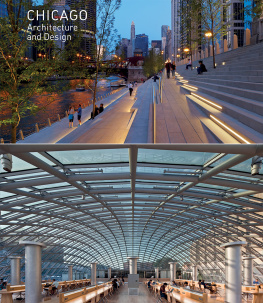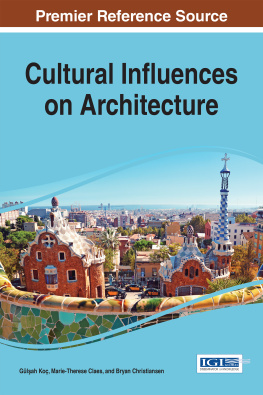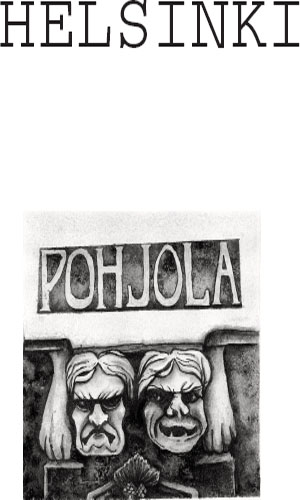Also in the series:
Buenos Aires by Jason Wilson
Oxford by David Horan
Mexico City by Nick Caistor
Rome by Jonathan Boardman
Madrid by Elizabeth Nash
Venice by Martin Garrett
Lisbon by Paul Buck
Havana by Claudia Lightfoot
New York City by Eric Homberger
Brussels by Andr de Vries
Prague by Richard Burton
Calcutta by Krishna Dutta
Edinburgh by Donald Campbell
San Francisco by Mick Sinclair
Cambridge by Martin Garrett
Kingston by David Howard
Athens by Michael Llewellyn Smith
Istanbul by Pater Clark
Hamburg by Matthew Jefferies
Lagos by Kaye Whiteman
Sicily by Joseph Farrell
Miami by Anthony P. Maingot
This edition first published 2014 by
INTERLINK BOOKS
An imprint of Interlink Publishing Group, Inc.
46 Crosby Street, Northampton, Massachusetts 01060
Copyright Neil Kent, 2005, 2014
Foreword Laura Kolbe, 2005, 2014
All rights reserved. The whole of this work, including all text and illustrations, is protected by copyright. No parts of this work may be reproduced, stored in a retrieval system, or transmitted in any form or by any means, electronic, mechanical, photocopying, recording, or otherwise without prior written permission from the publisher.
Library of Congress Cataloging-in-Publication Data
Kent, Neil.
Helsinki : a cultural and literary history / by Neil Kent.1st American ed.
p. cm.(Cities of the imagination)
Includes index.
ISBN 978-1-56656-544-8 (pbk.)
1. Helsinki (Finland)Description and travel. 2. Literary
landmarksFinlandHelsinki. 3. Helsinki (Finland)Intellectual life.
4. Helsinki (Finland)Guidebooks. I. Title. II. Series.
DL1175.28.K46 2004
914.897'1dc22
2004004615
Drawings by Maggie Claringbull
Cover Images: Helsinki City Tourist & Convention Bureau
Printed in the United States of America
To request our complete 40-page full-color catalog, please call us toll free at 1-800-238-LINK, visit our website at www.interlinkbooks.com, or write to InterlinkPublishing 46 Crosby Street, Northampton, MA 01060
e-mail: info@interlinkbooks.com
Contents
Early History
Swedish Rule
Imperial City
War and Peace
The Cityscape
C OMMERCIAL H ELSINKI:
F ROM H ERRINGS T O H I -T ECH
Early days
Baltic Port
Trade and Industry
Markets
Industrialization
Banking
Workers Metropolis
Electrification and Electronics
Working-Class Life
The Depression
Post-War Developments
Soviet Collapse and New Beginnings
I MPERIAL H ELSINKI:
T HE C ZAR, T HE A RCHITECT AND THE N EW C ITY
The Meilahti Estate
Fire and Rebirth
EngelsVision
Senate House
Costly Construction
Aristocratic Playground
Imperial Rule
Autonomy UnderThreat
Revolutionary Stirrings
Mixed Legacy
M ILITARY H ELSINKI:
W AR AND W ARRIORS
Suomenlinna Fortress
Russian Stronghold
TheCantonist Military School
Engels Military Barracks
Military and Police
The Crimean War
GeneralStrike
The First World War, Independence and the CivilWar
Gustaf Mannerheim
The Winter War
TheContinuation War
Peace and Resettlement
Post-WarRetrenchment and Reconstruction
E THNIC H ELSINKI:
L ANGUAGE, I DENTITY AND C OMMUNITY
Early Ethnic Composition
Swedish and Russian
TheFinnish Folk Revival
Awakening of Swedish-FinnishIdentity
Finnish-Russian Relations
CulturalDivide
German-Speakers
War and Reconciliation
Literary Expressions
Language and Legislation
Romaand Saami Peoples
Helsinkis Jews
Russians inHelsinki
Latter-Day Refugees
The ContemporaryScene
G OD AND H ELSINKI:
C HURCHES, F AITHS AND R ELIGIOUS D IVERSITY
Early Churches
The Old Church
The Great Church ofSt. Nicholas
Spiritual Diversity
Holy TrinityChurch
Military Chapel
The Uspensky Cathedral
Orthodox Autonomy
The Jewish Community
TheCatholic Minority
Muslim Helsinki
ReligiousFreedoms
Other Religions
New Churches
H ELSINKI AND N ATURE:
W EATHER, S PORTS AND P UBLIC H EALTH
Landscaping the New Helsinki
Botanical Gardens
Planting the Esplanade
Kaisaniemi Park
Attractions of Nature
Winter in Helsinki
Rus in Urbe
Epidemics
The Olympics
H ELSINKI AND R OMANTICISM:
M YTH, E PIC AND A RCHITECTURE
Runeberg and Lnnrot
The Kalevala
Aleksis Kivi
Akseli Gallen-Kallela and Karelia
Saarinen and National Romantic Architecture
Katajanokka
The Pohjola Insurance Company
The Helsinki Railway Station
Gustav Nystrm and Lars Sonck
Seurasaari Open Air Museum
The Twentieth-Century Kalevala Revival
H ELSINKI AND M ODERNITY:
U RBAN G ROWTH, A RCHITECTURE AND D ESIGN
Urban Change
Suburban Growth
Transport
Urgent Development
Post-War Building
Finnish Design
Arabia
Modern Furniture
High-Rise Helsinki
Alvar Aalto
Tapiola
The Changing Face of Helsinki
Urho Kekkonen: Modern Politics
The Presidential Residence at Tamminiemi
Womens Rights
I NTELLECTUAL H ELSINKI:
S CIENCE AND L EARNING
Early Humanism
The Observatory
Books and Printers
Schools
Helsinki University
Helsinki Polytechnic University
Educated Nation
Libraries
Exploration and Philosophy
The Birth of Technological Research
Nokia
Modern Technology
H ELSINKI AND H OSPITALITY:
H OTELS, D RINKING AND S AUNAS
The Seurahuone
Advent of the Steamship
The Ullanlinna Spa
Kappeli
Hotel Kmp and Other Hostelries
Restaurants
Car Ferries
Popular Entertainment
Red Light District and Night Life
Alcohol
Contemporary Cafs
Saunas
H ELSINKI AND THE V ISUAL A RTS:
M USEUMS, G ALLERIES AND A RTISTS
Cygnaeus Gallery
Ateneum
The National Museum and Sinebrychoff Museum
The Kunsthalle
Finnish-Russian Cultural Links
Worlds Fair, 1900
The Kaivopuisto Spa Colony
Havis Amanda: Public Sculpture
Amos Anderson: Private Patrons
Villa Gyllenberg
Didrichsen Art Museum
Venues Old and New
Kiasma
Art and Crafts
H ELSINKI AND THE P ERFORMING A RTS:
M USIC, O PERA AND B ALLET
Early Musical Venues
Fredrik Pacius
Kantele
Merikanto and Wegelius: National Tradition
Sibelius
Later Composers
Performers and Conductors
The Finnish Ballet
The Sibelius Academy
Theater Life in Helsinki
Finlandia Hall
Circuses
Jazz and Tango
The Live Music Society
Contemporary Music
Films
City of the Future
Foreword
Helsinki: the Blue-White Daughter of theBaltic Sea?
The growth and planning of Europes national capitals are closely linked to political, social and economic forces. Local, national and international changes are clearly visible in the history of Helsinki. Urbanization came late to Finlands capital city. Throughout the past two centuries it has appeared to foreign eyes above all as a modern city, even if the central part of the townscape is full of architecture dating from the beginning of the nineteenth century. As a Nordic capital, Helsinkis spirit has been, and still is, informed by a constant drive towards cultural modernity. This includes an ability to quickly reinvent itself while maintaining its historical roots.

